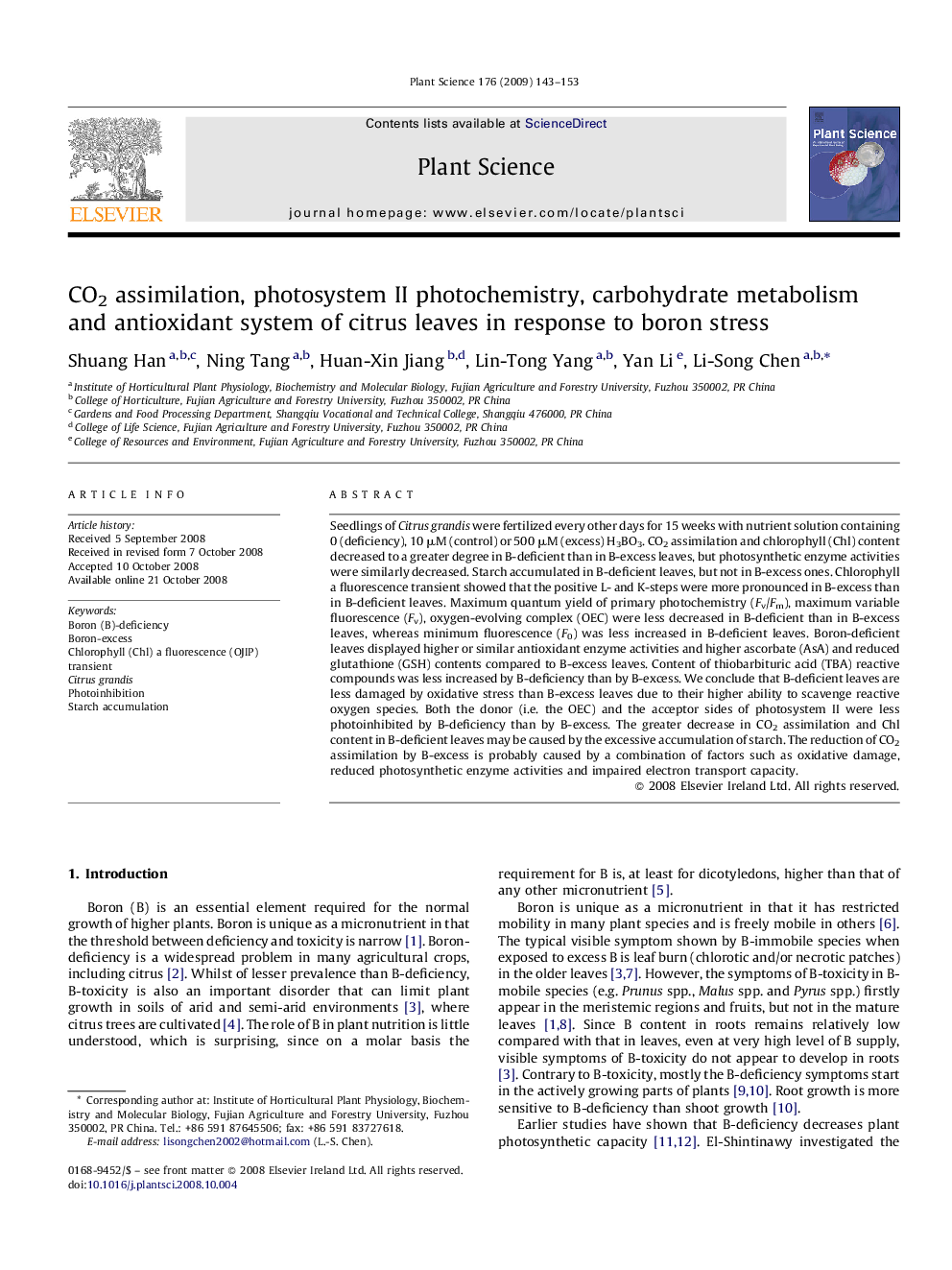| Article ID | Journal | Published Year | Pages | File Type |
|---|---|---|---|---|
| 2018044 | Plant Science | 2009 | 11 Pages |
Abstract
Seedlings of Citrus grandis were fertilized every other days for 15 weeks with nutrient solution containing 0 (deficiency), 10 μM (control) or 500 μM (excess) H3BO3. CO2 assimilation and chlorophyll (Chl) content decreased to a greater degree in B-deficient than in B-excess leaves, but photosynthetic enzyme activities were similarly decreased. Starch accumulated in B-deficient leaves, but not in B-excess ones. Chlorophyll a fluorescence transient showed that the positive L- and K-steps were more pronounced in B-excess than in B-deficient leaves. Maximum quantum yield of primary photochemistry (Fv/Fm), maximum variable fluorescence (Fv), oxygen-evolving complex (OEC) were less decreased in B-deficient than in B-excess leaves, whereas minimum fluorescence (F0) was less increased in B-deficient leaves. Boron-deficient leaves displayed higher or similar antioxidant enzyme activities and higher ascorbate (AsA) and reduced glutathione (GSH) contents compared to B-excess leaves. Content of thiobarbituric acid (TBA) reactive compounds was less increased by B-deficiency than by B-excess. We conclude that B-deficient leaves are less damaged by oxidative stress than B-excess leaves due to their higher ability to scavenge reactive oxygen species. Both the donor (i.e. the OEC) and the acceptor sides of photosystem II were less photoinhibited by B-deficiency than by B-excess. The greater decrease in CO2 assimilation and Chl content in B-deficient leaves may be caused by the excessive accumulation of starch. The reduction of CO2 assimilation by B-excess is probably caused by a combination of factors such as oxidative damage, reduced photosynthetic enzyme activities and impaired electron transport capacity.
Related Topics
Life Sciences
Agricultural and Biological Sciences
Plant Science
Authors
Shuang Han, Ning Tang, Huan-Xin Jiang, Lin-Tong Yang, Yan Li, Li-Song Chen,
